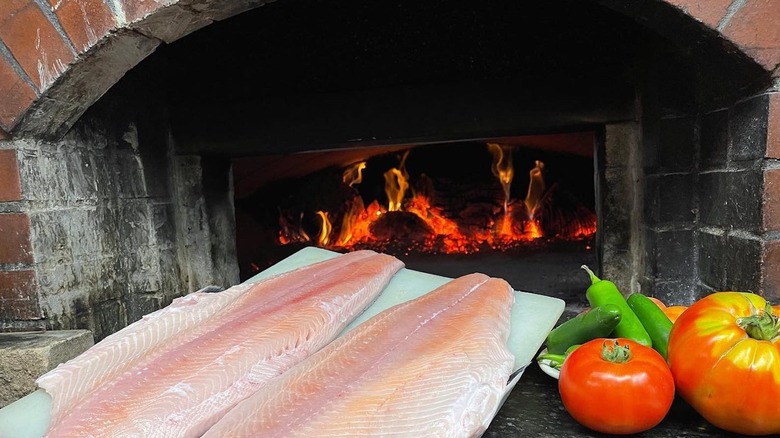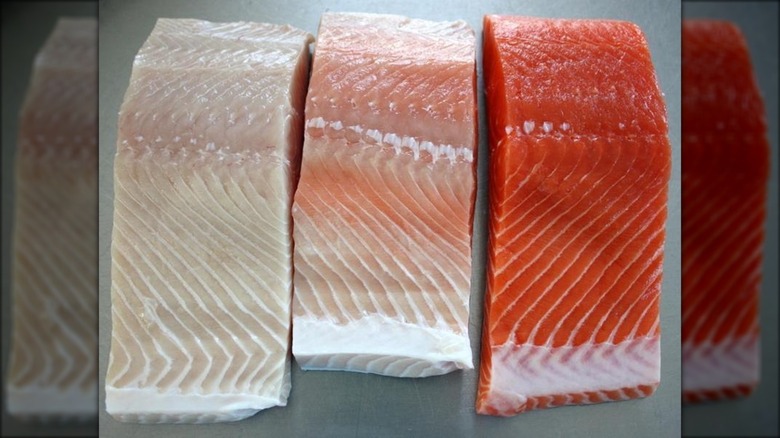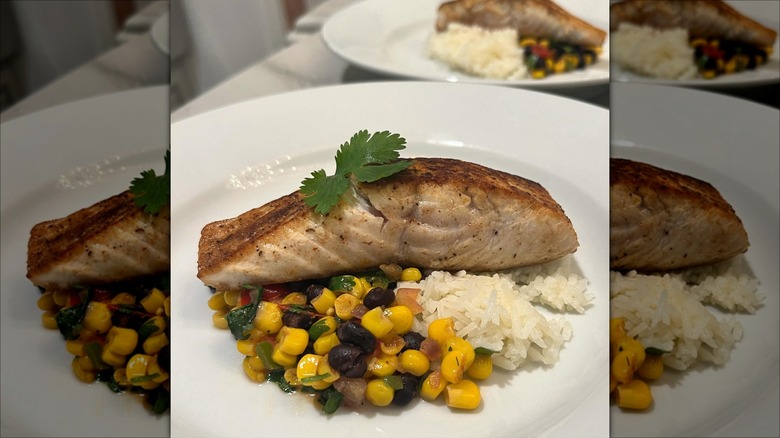Why Do Some King Salmon Have An Ivory Color?
When you're picking out a protein, it's important to keep an eye on the color. This is particularly true with meats like beef and fish such as tuna and salmon. In general, when buying salmon at the grocery store, we've come to expect that the fish will be a nice pink color and so avoid fillets that look anemic. For the most part, that's the correct call. You'll tend to see deep red sockeye salmon and the much pinker king salmon. But there is one type of king salmon that you might have come across with a much paler, ivory color.
In this particular case, that paler color on the king salmon isn't the concern it might be with other varieties. In fact, this lighter, ivory-colored king salmon is a rare and prized variety, and its hue is hereditary and completely natural. Most king salmon are the normal pink variety that you are used to seeing in the grocery store, with many of those coming from the coasts of either Alaska or California. Ivory king salmon make up about 5% of the population and are primarily found in the Gulf of Alaska. They're hard to find in the continental United States because they just don't tend to get very far from Alaska. Local restaurants are eager to snap them up and very little of the ivory king salmon makes it to commercial retail.
What makes ivory king salmon that color
So, what is it that makes the ivory king salmon come out so pale, rather than the expected orangey pink that we all think of at sushi restaurants? To understand that, it's more important to know why salmon are regularly pink, orange, or red, and that all comes down to carotenoids and what the salmon body does with it. In the wild, salmon eat plankton and crustaceans that contain the carotenoid astaxanthin. This antioxidant causes the salmon's flesh to take on its distinctive color. In farmed fish, astaxanthin is included as part of the fish feed to ensure the same effect.
With that in mind, it's not surprising that the original theory about the color of ivory king salmon's flesh was simply that these fish had a diet with less carotene pigment in it. The ivory king salmon is not a different species of the fish, so a change in diet would seem to explain it. However, according to the Alaska Department of Fish & Game, the cause is not actually at a dietary level, but rather at the genetic level. King salmon have a recessive gene that, when expressed, provides another enzyme that is able to break down and process the pigment, rather than it simple being absorbed into the fish's flesh. Ivory king salmon just have an extra trick that means all that coloring never takes hold.
Do ivory king salmon taste different?
If it's all just down to whether pigment is processed in the salmon's body, can you expect a different experience from eating ivory king salmon compared with the traditional meal? For a long time, ivory king salmon was assumed to be inferior, lacking that rich color. In the past, lobster had a lot of negative assumptions around it and became a food of the poor. Since then, people have wised up and now lobster is regularly the most expensive dish on the menu and people will go wild for it. Ivory king salmon has had a very similar journey.
Alaskans who knew the secret of ivory king salmon were able to enjoy it. It would regularly sell for around 60% of the market value of regular king salmon. Chef David Moorehead, who worked in Juneau, told Alaska Fish & Wildlife News, "I used to be able to get white king for less than regular king. It must have caught on, because the cost has gone through the roof." People describe the fish as being much more buttery than the familiar pink king salmon, and has a more delicate flavor, similar to some white fish.


